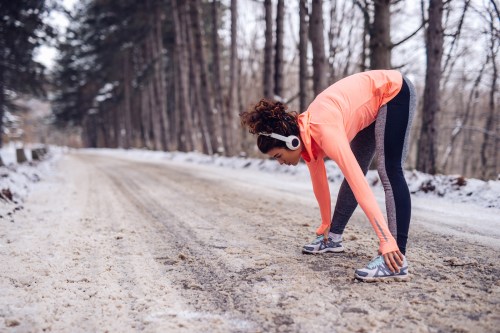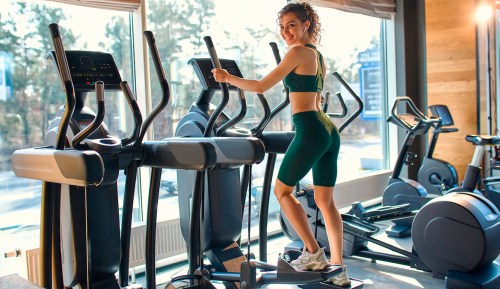How to know if you need to strengthen or stretch your hip flexors—because, ouch!
A trainer shares how to stretch hip flexors or strengthen them, based on your unique needs. (Hint: Runners, you need all the stretching you can get.)

The hip flexors are one of those regions in the body that you never notice until they’re epically sore. Most of the time, pain eeks into the creases of the hips after a particular grueling core workout or in the aftermath of a long run. Given that the hip flexors are a set of muscles, however, it can be confusing to know whether you should strengthen or stretch (i.e whether they’re weak or just tight) them to help alleviate your soreness.
First, an anatomy lesson: Your hip flexors connect the top of the femur to the lower back, hips, and groin, and play a pretty big role in how you move each and every day. “The main purpose of the hip flexors is to stabilize the core,” says fitness pro Katrina Pilkington, NASM-CPT. “They also are integral in the function of movement throughout walking and running.” Because most of us are living out our days as desk zombies, Pilkington says that we tend to make the sitch worse. “Remaining in a seated position for the majority of the day can cause the hip flexors to be tight—and your hip flexors will remain weak if they aren’t strengthened during exercise,” she says.
The TL;DR is that everyone with a day job (You! And you! And you!) could stand to strengthen and stretch their hip flexors. If you want to know which to prioritize, Pilkington and trainer Prentiss Rhodes, NASM-CPT, are about to give you the roadmap for which to pay attention to.
The tell-tale signs your hip flexors are tight
How the muscles in your lower body and lower back feel is a direct reflection of how loose and limber they are. “Sometimes people feel twinges of pain in their knees and ankles from hip flexor tightness or weakness. They can feel low back pain or even pain in the glutes. When the hip flexors aren’t at their optimal length to perform, they trigger tension in the areas that are above or below them,” says Pilkington. Meaning, hip flexor tightness might not just show up in the hips.
Obviously certain activities are more culpable for causing tightness in the body. “Sports such as cycling, horse riding, certain martial arts, and even surfing may require specific postural positions to be successful,” says Pilkington. Unless your horseback hobby includes stretching on the saddle (yes it’s a thing), you’re going to want to limber up to make sure that your hip flexors, lower back, or knees don’t hurt after you’ve caught that wave or pounded the pavement.
Stretch your hip flexors:
The one and only sign you need to strengthen your hip flexors
Rhodes says that if you’re wondering how strong your hip flexors are, one move is a dead giveaway: the squat. “If we look at the squat from the side view, we may notice things like the lower back arching or the top of the pelvis tilting forward,” he says. “We may also see the torso lean excessively forward.” As Rhodes points out, it’s very common to have weak hip flexors (again, sigh, because of sitting). If you suspect you have them, drop it down in front of a mirror and sneak a peek at your lower back.
Should you discover that your hip flexors aren’t all that strong yet, don’t fret. It just means you get to do what (IMO) is the most fun type of strength training out there—which is, duh, working your glutes. “Strong and functional glutes will help keep the hip flexors utilized,” says Pilkington. When both cheeks are involved, you’ll find yourself sitting up straighter and feeling more supported in all your movements.
Strengthen your glutes:
One side of your body is probably weaker than the other—here’s how to deal. Plus, what to do if you have a glute imbalance.










